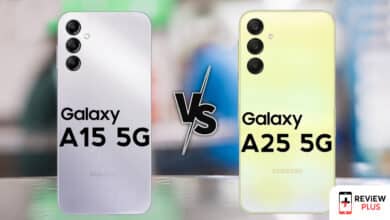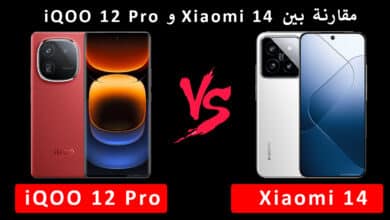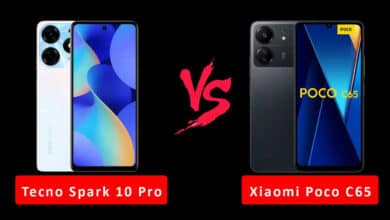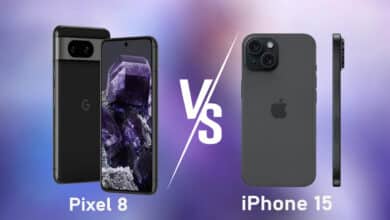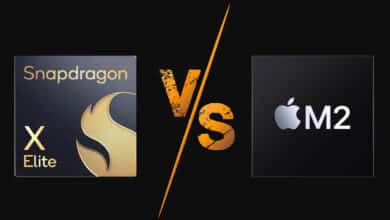We show you the main differences between virtual continuity technologies such as Virtual Reality, Augmented Reality, Divergent Reality, and Extended Reality. Although we are aware of the complexity of the topic, we will try to make it as simple as possible while explaining each of the four techniques with some examples.
The difference between virtual reality, augmented reality, and mixed reality
Virtual reality, augmented reality, mixed reality, and extended reality are all complex technical terms that can baffle and confuse many people who are not tech-savvy.
Unfortunately, the four technologies - despite their differences - are usually referred to as either VR or AR.
However, these terms carry more details and information that need more clarification, how they can be used, and how they can be used to serve users.
Also read: We previously talked about Review Plus Difference between Apple Vision Pro and Sony Playstation VR 2 They are among the reasons why we wanted to explain the differences between virtual and augmented reality technologies.
According to the latest studies recently conducted by an American university, it is expected that the extended reality technology and technologies market will grow by about $152.5 billion by 2026, i.e. a growth rate of approximately 30.5% compared to market rates in 2020.
In order to understand this world more clearly, you will have to know the most important differences between different technologies and how their capabilities and specifications are lost to enhance their environment.
So, without extending the introduction, let us explain to you what are the most prominent differences between virtual reality, augmented reality, mixed reality, and extended reality.
▼ What is the real reality?
Surely you have ever got into an argument with one of your friends about something, so that to you it was the real thing, while it appeared to your friend a completely different reality.
For example, dark blue might look like “Black” to you, while to your friend it might appear to be “dark blue.”
We're not here to talk about poor eyesight or the inability of either of you to process colors properly. But the essence of the idea is that the information, the details, and the way in which we try to construct the real reality are different and unique to each one of us, and this is what the term “genetics” calls.
It depends on many factors and criteria, including the extent to which we are saturated with details through our past experiences, our levels of experience in life, and how we shape our perception of the world around us.
Also check out Review Plus: The Best Collection VR games In 2023 (a distinguished group of VR virtual reality games).
Humans try to understand why they confuse virtual reality with physical reality even when they are very confident that there are differences between them.
But what is the real reality in a nutshell? Well, reality is a concept or construct that each one of us makes based on his experiences in life and what our senses perceive.
I know that the matter is still complicated for you, so let us explain the matter to you more clearly in the following lines: –
For example, do you remember the last time you laughed or cried while watching one of your favorite movies? Well, you reacted to a scene in the movie as if it were from the real world, even though you're pretty sure it's just a figment of the imagination.
But at that particular time, you reacted to the film as if it were a real source. But most importantly, Extended Reality adds another layer to the experience to make it feel more intense and more realistic.
When you wear VR glasses, you will feel as if you have moved into a real environment from the digital world. The idea here lies in the success of virtual reality technologies in making your senses overcome your thinking.
Although you are fully aware with your intellect that this environment is not real, for your body it is not. This digital environment seems completely real to your senses and your body.
For these technologies to be perfectly harnessed, the human being must feel as if the digital environment they enter is real. In a nutshell, the digital environment should feel like it's part of your real world, otherwise there would be no benefit from these technologies.
▼ What is virtual continuity?
Next comes a more complex term known as Virtuality Continuum. This term is to denote the phenomenon of full possibilities between the physical world and the real environment and between the virtual world or the digital environment.
Although distinguishing between the two seems difficult at first glance, in fact there are some fundamental differences between them. The concept of a "virtual continuum" was first invented by a scientist in 1994.
Virtual continuity is very simply a phenomenon that tries to help people understand and visualize the differences between the different modern technologies that exist at the present time, and those inventions or technologies that have not yet been reached.
From a psychological perspective, different technologies often get mixed up because of the blurring of the different precise boundaries of each. However, one is aware that there is a fine line between these technologies.
▼ What is extended reality?

Extended Reality refers to any type of technology that attempts to add digital elements to the physical environment, potentially blurring the line between the physical and digital worlds.
Extended reality technology includes both virtual reality, augmented reality, and any technologies that have not yet been developed as long as these technologies try to create a virtual series of events and make them appear from physical reality.
Extended reality technology is still being tested, and the technology for it is not yet complete. Where scientists and innovators are trying to discover how the user can interact with it in his real world and how it is possible to reach the maximum dimension of its positive results.
The downside of extended reality technology is that no specific limits or standards have been set for it yet.
The only solution for innovators is to simplify the experience as much as possible and push it one step at a time so that a person is not surprised or suddenly shocked by the imaginary leap that may be difficult for him to deal with in his real world.
▼ What is augmented reality?

Augmented reality is a technology that allows digital objects to be superimposed within a real-world environment. In augmented reality experiences, you can very easily see the digital elements in the physical and real environment.
However, there is no interaction between the digital elements and the real world elements.
In a nutshell, augmented reality marks the end of the physical world through the phenomenon of virtual continuity. This phenomenon is evident in a large number of industries including the world of video games, education, healthcare and many other industries.
The simplest example of this is when you are trying to go to the hospital for some medical examinations that require blood tests, for example, the nurse may have difficulty finding your vein, which makes the test experience more painful. Augmented reality technology is trying to help you find your vein better.
For example, augmented reality technology is used by AccuVein to convert the heat signature of a patient's veins into a live image that is superimposed on the skin of the patient's hands, which helps doctors find blood vessels better and more easily.
In fact, augmented reality technology helps increase the patient's chances of success by nearly 350% compared to regular injections.
AR technologies are still evolving, and there are many opportunities and possibilities to massively revolutionize how we interact with digital products and industries.
▼ What is mixed reality?

Mixed reality, on the other hand, tries to take augmented reality technology further, allowing you to not only overlay digital elements in a real-world environment, but also allow them to interact with each other.
For example, with mixed reality technology, humans can see digital objects and real-world objects within the same frame and interact with them naturally.
Mixed reality experiences cover the main sequence of virtual continuity. However, it can sometimes be difficult to fully understand the concept behind mixed reality technology.
But you can easily interpret mixed reality as a combination of the digital world and the physical world within a single environment that allows you to interact with elements of both worlds.
▼ What is virtual reality?

Virtual Reality attempts to simplify the creation of the digital environment by completely excluding the physical environment of the real world.
Through virtual reality experiences the furthest dimension of the virtual continuity sequence is reached.
Many people have problems with VR experiences because it is an environment that generates emotional responses even when you know it is fake and not real.
For example, people can construct reality through the information they receive from their physical senses, which makes it difficult for people to realize that they are inside a fully digital environment as a result of their interaction with the digital environment in the way they receive their senses of digital elements in the surrounding environment.
Through virtual reality, both audio and visual systems are greatly benefited, but it is possible to reach another dimension with virtual reality if some other senses are added to the same experience.
The simplest proof of this is the “plank walk” experience, which is a very popular virtual reality experience in which you are allowed to walk on a plank from inside an elevator and out of a skyscraper. Most people who struggle with some sensory issues such as “fear of heights” may not be able to succeed in this experience, even though they know that it is not a real experience.
However, it is possible to add another dimension to this experience by adding the sense of touch, in which case the experience of “walking the plank” will be more difficult for more people.
Summary
As you have seen for yourselves, there are many technologies that can contribute to changing the way we understand the virtual world by adding digital elements to our real or physical world, whether with minimal or maximum limits.
All these technologies are combined into a series of virtual continuities according to specific criteria that separate the extent of the differences between the digital elements that have the ability to block and block our real-world environment and how we interact with the digital world.
Also read: iPhone 15 and iPhone 16 integration with Vision Pro and Wi-Fi 7
If you can create a clear picture in your head of the virtual continuum, you will be able to clearly understand the differences between all the previous types of technologies. However, we are aware that this can be difficult for most people as long as they have no prior experience with each of the four technologies.
- augmented reality It is an environment of the real world or the physical world with elements of the digital world without interaction.
- Mixed reality: It is an environment that mixes the real world and the digital world that allows people to interact with physical and digital elements.
- Virtual Reality: A fully immersive digital environment.
- extended reality An umbrella term that covers all types of virtual continuity phenomena including mixed, augmented, and virtual reality.
Conclusion
It is expected that the technologies of extended reality will not stop to a certain extent, but manufacturers will have to provide simpler and safer experiences to preserve human safety. However, technology companies specializing in this industry segment are still learning and adapting to the dimensions of new technology that are being reached.
It is said that virtual continuity technologies are still in the early development stage, which is trying to take advantage of all the potentials that have been found and take advantage of each technology individually to provide more usable experiences in real life.

